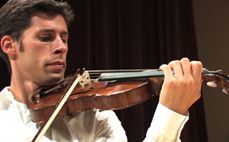My Instruments
Swanson Violins was the winner of the award for “Best Tone for Violin” at the VSA-Oberlin College Summer Workshop 2006. The award was judged by the late world-renowned luthiers Rene Morel of New York, NY and Jean Fredrick-Schmitt of Lyon, France, as well as other industry professionals.
Philosophy
As a maker of fine violins, violas and cellos, I am dedicated to providing you with an instrument that will reach the most ambitious goals in performance. I achieve this goal through a commitment to quality craftsmanship, the use of the finest materials available, and the application of acoustical principles learned by studying Brescian and Cremonese makers of the seventeenth and eighteenth centuries.
Choosing an instrument is one of the most important decisions facing the serious musician. It can be overwhelming given the wide variety currently available on the world market. North America is the world’s leading innovator in violin making, and I am very proud to be part of this living tradition that, in many ways has surpassed the craftsmanship and tonal potential of old Italian instruments that have long held the confidence of serious players.
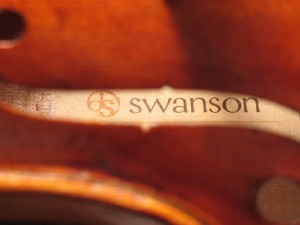
Examples of my work
This violin was inspired by the great maker Guissepi Guarneri ‘Del Gesu’, who was active in Italy in the early-mid eighteenth century.


I have experimented with many models of violins over the years, and this interpretation of a late model ‘Del Gesu’ is one of my favorites. It has the raw power associated with these classics, yet does not sacrifice the upper frequencies which allow for the brilliance and projection needed by soloists. Players are often surprised by the ease with which this model produces a wide dynamic range.
This violin was inspired by Giovanni Francesco Pressenda
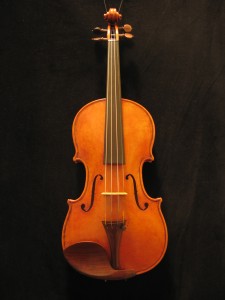

We all borrow from our heroes in our own pursuits and build upon our own successes. Pressenda’s work never ceases to amaze and inspire me. His instruments embody a rare balance between perfection and personality. My interpretation of his work has been very successful for me. This is a robust model based on an 1829 Pressenda, and has been popular with soloists and chamber players.
A viola inspired by Giovanni Battista Guadagnini
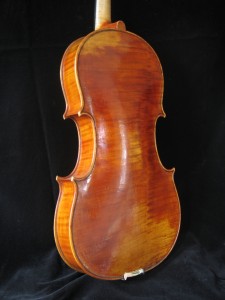
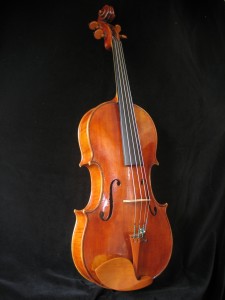
This is a small Viola (15 ¾”) with a big and balanced sound. The depth and strength of the C string rival that of larger Violas. Many violinists like this model because it has a smaller upper bout which gives the player easier access to upper positions, yet delivers the performance of a larger instrument.
A viola inspired by Giovanni Paolo Maggini

I enjoy making this model because of its versatility and character. The Brescians are known to have made the most sought-after violas. This medium-sized viola (16”-16 ½”) is comfortable for players accustomed to both smaller and larger violas. It offers a very large sound with great warmth and flexibility, and has the aesthetic personality associated with Brescian instruments. The instrument in the photo is unvarnished.
Cello inspired by Stradivari

This is a remarkable instrument. It is perhaps not as robust as some larger cellos, but is very balanced, easy to play and responsive, with excellent projection.
Models

The models I use are inspired by exceptional sounding instruments. My reason for this approach is simple. The dimensions and proportions characteristic of different models contribute to distinct sound qualities and how the instrument “feels” to the player. Achieving tonal complexity involves many more factors than model shape, but generally speaking, some models offer a dark, warm, rounded sound favored by chamber players, while other have the brilliance and power required by a soloist. I like to make instruments that appeal to players of all types including, orchestra players, chamber musicians, jazz and traditional fiddlers. Players who try my instruments often tell me that they do not play or sound like new instruments. Rather, they have a robust, warm, focused sound that is well balanced in dynamic range with very quick response.
Currently, I am focusing on violins inspired by Giuseppe Guarneri ‘del Gesu’ and Giovanni Francesco Pressenda, violas by Giovanni Paolo Maggini, Andrea Guarneri and Giovanni Battista Guadagnini and Cellos by Guadagnini, Antonio Stradivari and David Tecchler. These have been successful models for me and appeal to a broad range of players.
Materials

Swanson instruments are made of only the finest quality materials. While I enjoy using maple and spruce from both European and North American sources, all the wood I use is carefully selected for stiffness and density ratios, structural, acoustic as well as aesthetic qualities and I make sure that it has been properly air-dried to assure stability. I use quality hand-made fittings that are simple and elegant in design in order to complement and enhance the features of the instrument.
Setup
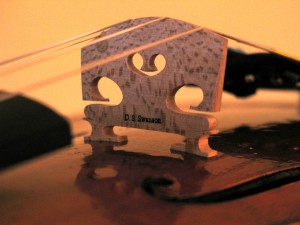
All of the “changeable” parts on the violin are referred to as the “setup”. This includes the fingerboard, nut, pegs, tailpiece, saddle, sound post and bridge. The crafting of these elements is critical to the playability and performance of the instrument. Proper adjustment is as important as the construction of the box itself. All of my instruments are set up to specific, time-tested measurements and quality standards used only in the most reputable shops.
Varnish and finish
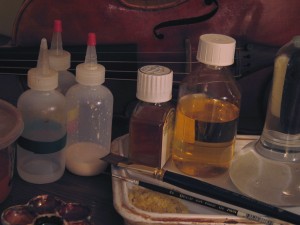
My varnish formulas are based on what the current research reveals about seventeenth and eighteenth century Italian varnishes. I never treat any of my instruments with caustic chemicals or fumes to artificially age the wood. Time has proven that these methods are ultimately detrimental to the structural integrity of the wood fibers. With proper care, the ground I use will protect the wood for centuries, yet the varnish will wear with time in a natural way to give the instrument the visual character we associate with old instruments.
Commissions
For commissioned instruments, I offer the option of a slightly distressed finish, and choices of different color hues ranging from brown to orange-red. I prefer not to use the antiquing style often seen in one-hundred year-old factory instruments from Europe. Rather, I rely on what I have learned from my own observations of seventeenth and eighteenth century instruments. I have developed my own techniques to simulate the wear that occurs on these instruments naturally over time.
My current instruments have a transparent brown-amber hue and have a “straight” varnish, with no antiquing, unless requested.
Ordering:
Please send me an email if you have questions about instrument availability and commissions.
The advantage of commissioning an instrument is that the player can choose wood, and customize certain aspects of the instrument. By purchasing one of my instruments, you are guaranteed excellence in quality, and consistency in playability and overall performance. However, every handmade instrument, like every player, has a particular personality and character of its own. Therefore, commissions are not binding. I want everyone who makes a Swanson instrument their own to be fully satisfied.
Please call or e-mail for details, pricing and waiting times.
You will also find my instruments in stringed instrument shops in Atlanta, Boston, Chicago, Cleveland, Greenville, and Raleigh. Please call for availability.
